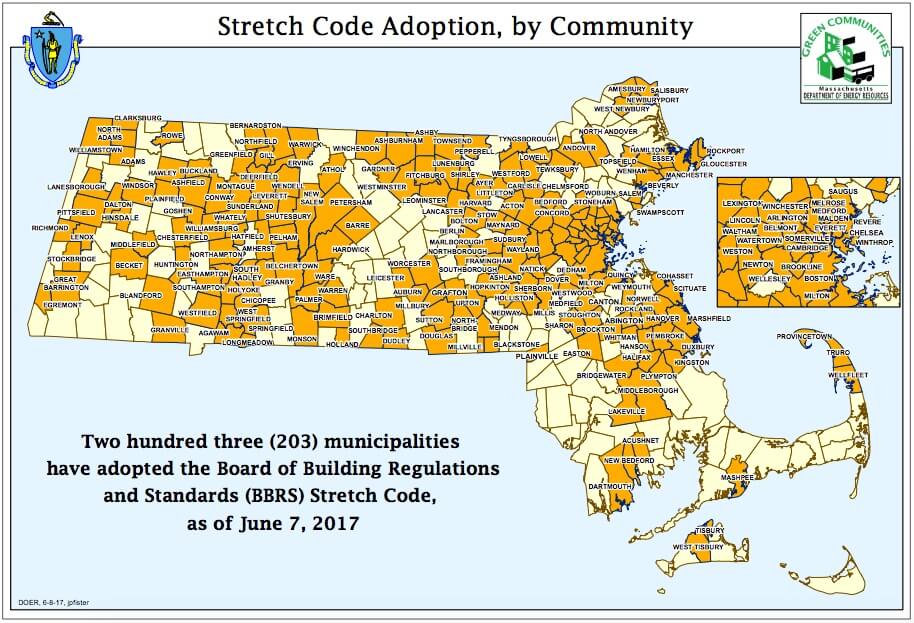No products in the cart.
Over 200 MA Municipalities Adopt Stretch Code
Massachusetts has long been a leader for energy efficiency. Since 2008, Massachusetts has pledged to upgrade its building code every three years to align with the most recent version of the International Energy Conservation Code (IECC). In other words, MA builders and contractors will be routinely required to implement new strategies and technologies that lead to better, safer, and more energy-efficient homes.
If you want to learn more about how contractors are becoming energy efficiency experts working with builders to ensure that new homes are meeting building code requirements, browse our What is RESNET? section and learn about the RESNET Certification program.
One of Massachusett’s most admirable accomplishments occurred in 2009, when it became the first state to adopt an above-building code appendix called the Stretch Code.
What is the Stretch Code?
The Stretch Code offers guidance to builders and contractors who want to design new homes with energy performance in mind. The appendix takes the “base” building code requirements to the next level by providing cost-effective construction strategies that yield greater energy savings than the “base” code.
In 2015-2016, the Department of Energy Resources (DOER) hired an independent building energy consulting firm to look at the cost-benefit trade-off of building new single-family and multi-family homes to the 2015 Stretch Code. Every test conducted showed homeowners seeing a positive cash-flow from day 1 after purchasing a 2015 stretch code home vs. a 2015 base code compliant home.
Another interesting component to the MA Stretch Code is that municipalities can choose to adopt it in lieu of the base building code. As of June 7, 2017, 203 municipalities had adopted the Stretch Code, with more expected in the upcoming months. In fact, it appears that two municipalities adopted the Stretch Code in just the last three weeks.
To put that into perspective, Wikipedia notes that there are 351 municipalities in total in Massachusetts – based on the form of government, there are 295 towns and 56 cities.
Click to enlarge image
So 203 out of 351 total municipalities results in approximately 58% of the state going above and beyond the base building code and choosing to implement the most cutting-edge green technologies in their new housing stock.
It’s no wonder that Mass. is one of our best states for RESNET HERS Rater training. The local building codes certainly encourage energy-efficient building practices, and it’s clear from the widespread adoption of the Stretch Code that energy-efficient building practices are indeed preferred.
If you’re a MA home builder, you need to remain competitive with the necessary understanding of building code requirements. Likewise, residential contractors performing ancillary services must also be aware of the preferred energy-saving strategies.
For more information about how you can maintain a competitive edge in the MA residential housing market, give us a call at (800) 460-2575 or email [email protected] with your questions.
